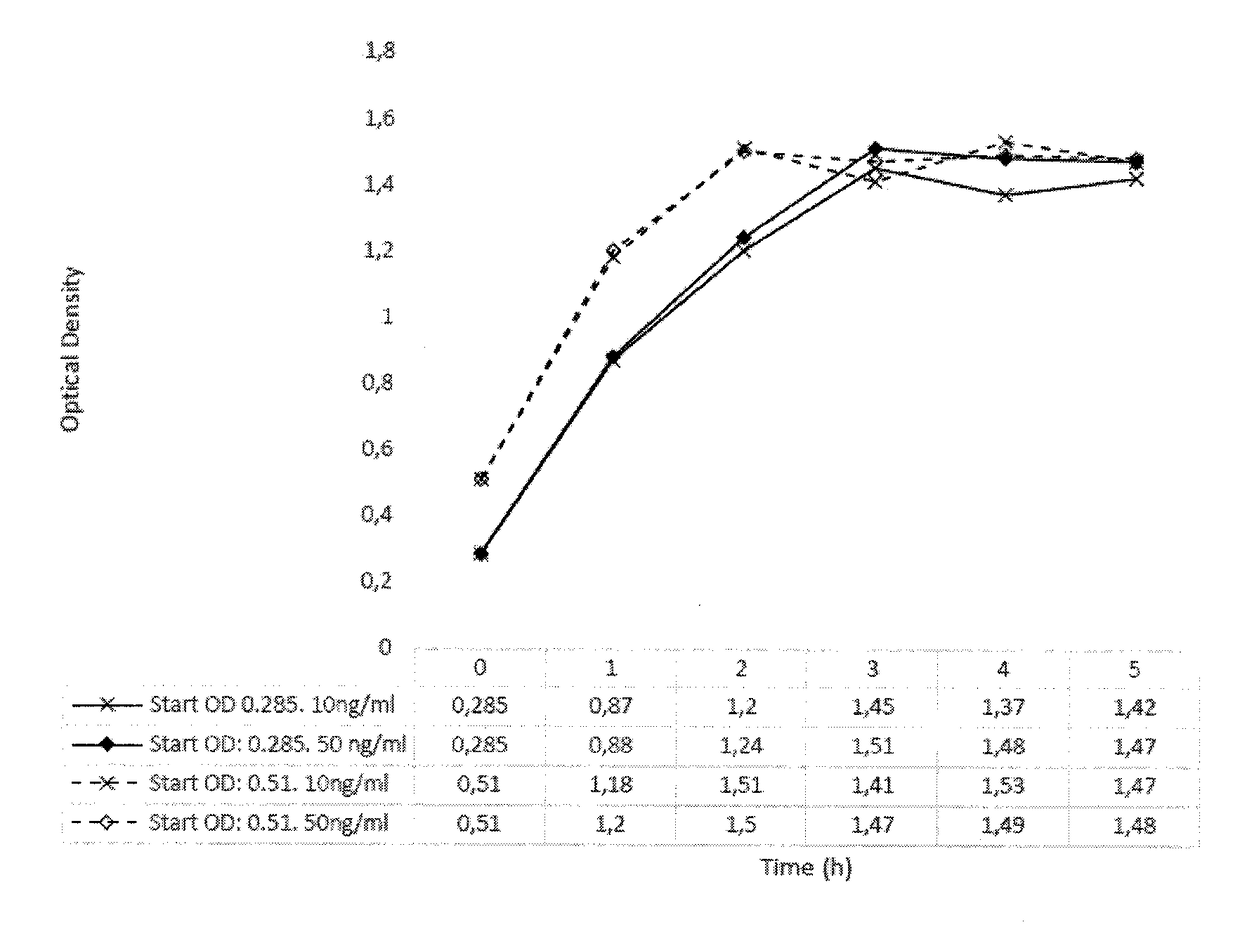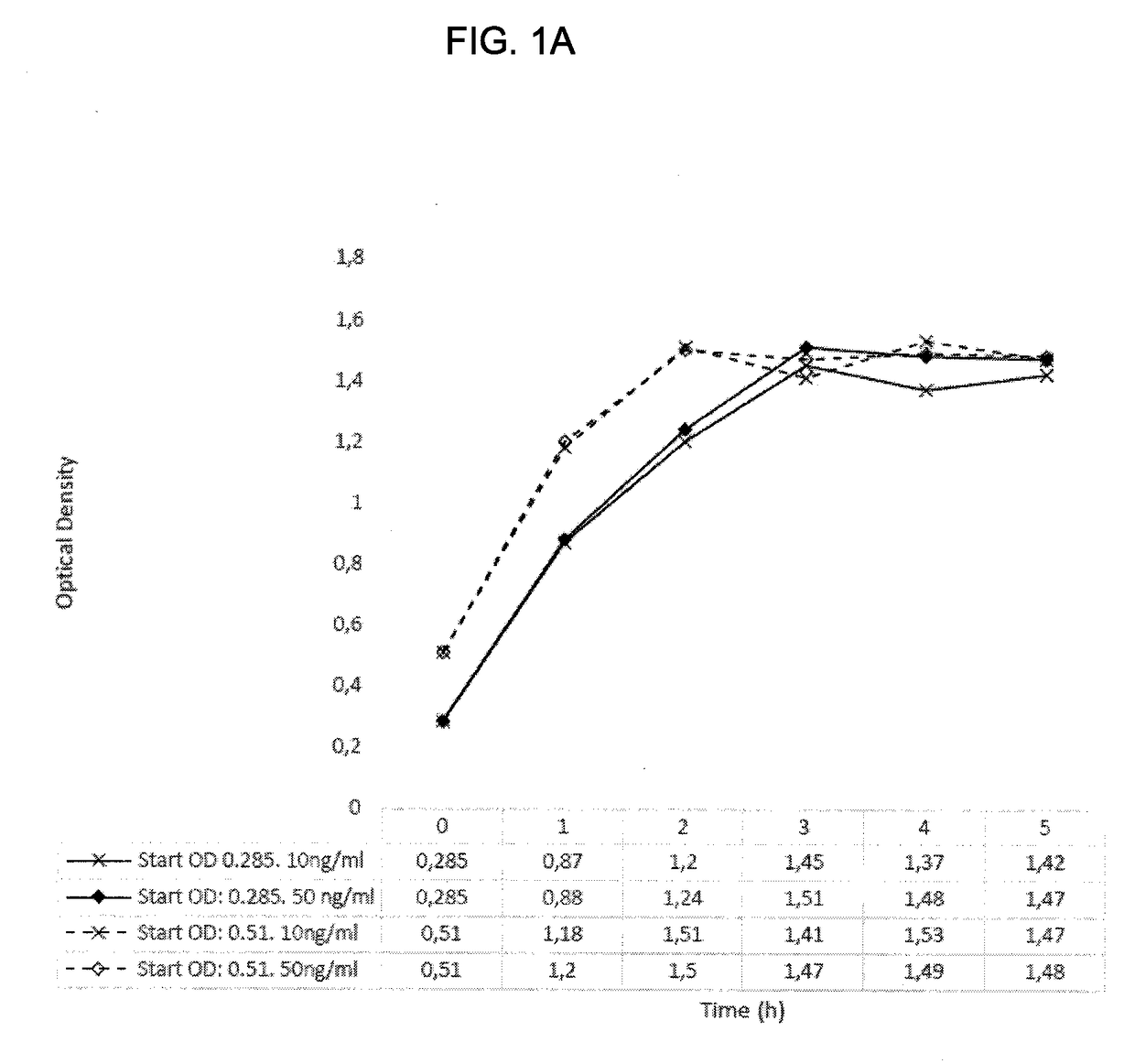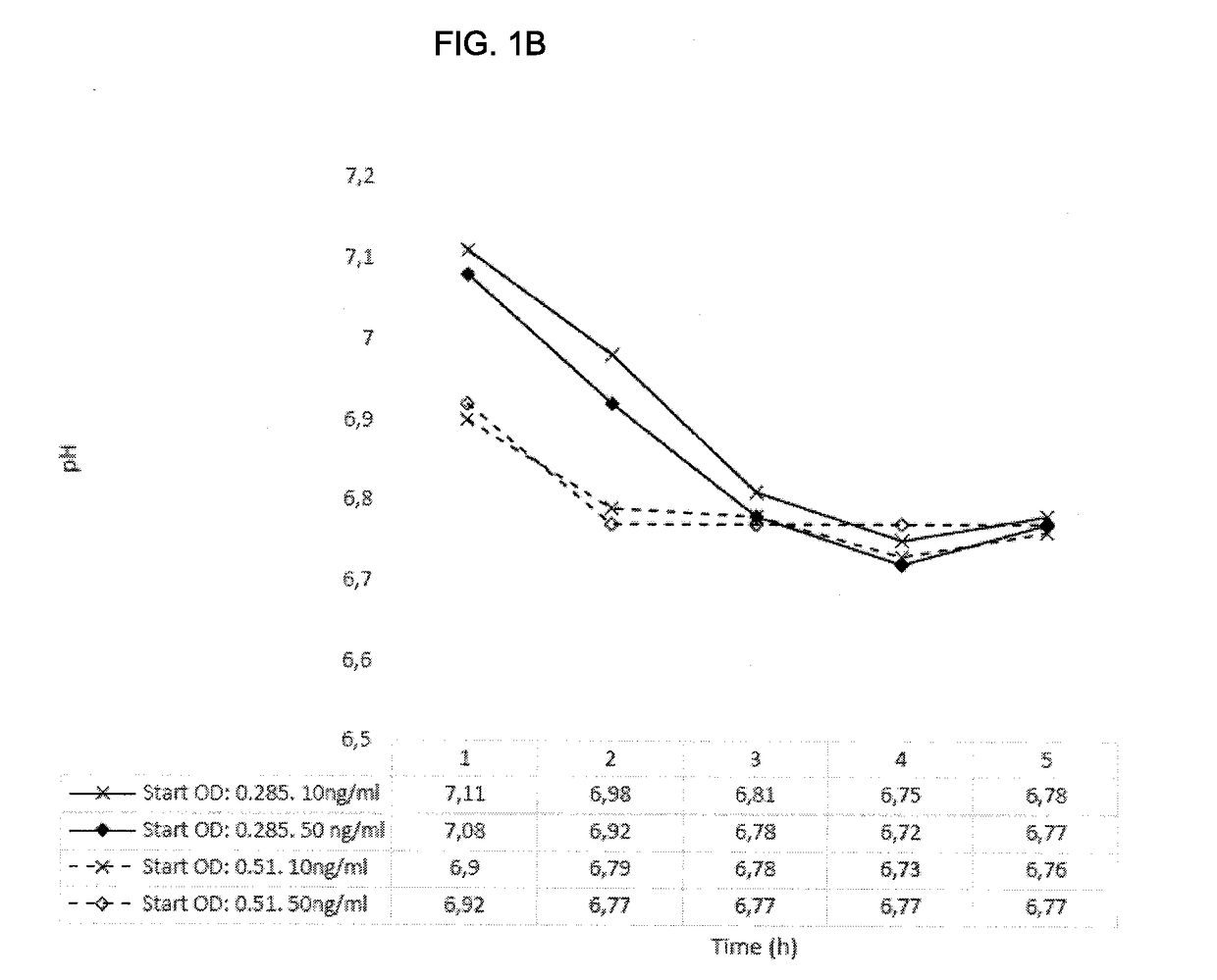Methods for wound healing
- Summary
- Abstract
- Description
- Claims
- Application Information
AI Technical Summary
Benefits of technology
Problems solved by technology
Method used
Image
Examples
example 1
Bacteria Transformed with Plasmid LrCK1
[0169]Lactococcus lactis with mLrCK1 cultured overnight, re-inoculated and grown to OD 0.3 or 0.5 showed no growth impairment when the activation peptide SppIP (SEQ ID NO: 19) were added at either 10 or 50 ng / ml. During these growth experiments pH was measured and the lowering was most accentuated in the growth phase and then stabilized around pH 6.7 when grown is Mes-medium (FIGS. 1A & 1B). (pH of skin=5,5, pH in wounds=7.15-8.9 where alkaline pH correlates with lower healing rate (Ref. 14))
example 2
n of Plasmid pLAB112 Luc
[0170]In vitro expression of plasmid pLAB112_Luc in Lactobacillus reuteri R2LC re-inoculated and grown for 2 hours from overnight culture remained high for more than 600 minutes (10 h.). There was no leakage / expression from plasmids not activated with activation peptide SppIP (FIG. 2).
[0171]When Lactobacillus reuteri R2LC with pLAB112_Luc re-inoculated and grown for 2 hours from overnight culture were placed in 1 day old cutaneous full thickness wounds of anesthetized mice, bacteria was restricted to the wound site and plasmid expression was high for the first hour but signal was detected for more than 4 hours (FIG. 3).
example 3
Wound Healing in Healthy Mice
[0172]Wounds were monitored daily during the healing process. In healthy mice daily single application of Lactobacillus reuteri R2LC_pLAB112_mLrCK1.4 reduced time to both 75% wound surface closure and to complete (100%) wound closure compared to control mice where nothing was applied to the wound and to mice where control Lactobacillus reuteri R2LC (pLAB112_Luc) was applied daily (FIGS. 4A, 4B & 4C). The effect of Lactobacillus reuteri R2LC_pLAB112_mLrCK1.4 on wound healing was most prominent during the first days post wound induction. Wound size was then further reduced by daily application (one and two days post wound induction) of Lactobacillus reuteri R2LC_pLAB112_mLrCK1.4 when compared to control mice where nothing was applied to the wound. The total wound exposure measured as area under curve was also reduced in this group compared to control mice where nothing was applied to the wound (FIGS. 5A & 5B). FIGS. 35A, 35B & 35C show representative image...
PUM
| Property | Measurement | Unit |
|---|---|---|
| Fraction | aaaaa | aaaaa |
| Strain point | aaaaa | aaaaa |
Abstract
Description
Claims
Application Information
 Login to View More
Login to View More - R&D
- Intellectual Property
- Life Sciences
- Materials
- Tech Scout
- Unparalleled Data Quality
- Higher Quality Content
- 60% Fewer Hallucinations
Browse by: Latest US Patents, China's latest patents, Technical Efficacy Thesaurus, Application Domain, Technology Topic, Popular Technical Reports.
© 2025 PatSnap. All rights reserved.Legal|Privacy policy|Modern Slavery Act Transparency Statement|Sitemap|About US| Contact US: help@patsnap.com



